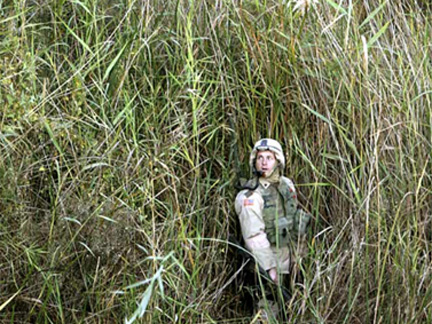shortlisted webdocumentary
Bearing witness: five years of the Iraq War
Article published on the 2009-08-18 Latest update 2009-08-26 11:14 TU
The starting point for the Bearing Witness webdocumentary was the Reuters team of 100 people in Iraq.
"That's photographers, journalists, videocameraman, everything down to staff who are managing that bureau," says Jassim Ahmad from London, where he is Head of Visual Projects for Reuters.
He ran the project together with Paris-based colleague Ayperi Karabuda Ecer, Vice-President of Reuters Pictures. The idea for the webdocumentary came as the Iraq team reached the five-year mark in Iraq.
"This team of 100 people had been reporting from Iraq for the five years of the war and coming up to the fifth anniversary we just thought it would make a lot of sense to do a project to kind of look back at everything that had happened," says Ahmad.
The Iraq office lost seven people over the five years and they feature prominently in the finished documentary. "Part of our motivation was to create something which was a bit of a testimony for those seven lives and indeed for the over 100 journalists who've been killed," says Ahmad, describing Iraq as "the most dangerous war for press in history".
One of the problems in putting Bearing Witness together was the sheer amount of material. "If you can imagine how much a news agency produces every day and multiply that across weeks and months and five years".
They pulled the hard drive from the Baghdad Office and began the painstaking work of going back through all the images taken over the five years. "That was a fascinating thing in fact, like putting a puzzle back together", says Ahmad, explaining that the whole project took about three months, finishing in time for the March anniversary.
This was their first big multimedia project and Ahmad describes it as "a big learning process". It was produced in collaboration with multimedia producers MediaStorm.
"Multimedia is strange because it's really a blank canvas. You have to think about how you want to build your story," says Ahmad, saying the difficulty is knowing how to weave all the different elements together.
"In the last year, we've definitely seen our photographers picking up projects where they start to record audio, or in some cases video, and that's a nice natural progression" he says.
But what of the risk of a photographer who's so busy running cables, listening for audio or setting up video cameras, that s/he misses the shot?
"You definitely can't do everything in one go," he agrees, "even when you just have a camera, there's always a risk that you miss something".
"But it's a skill to know when to use what medium," he concludes.






